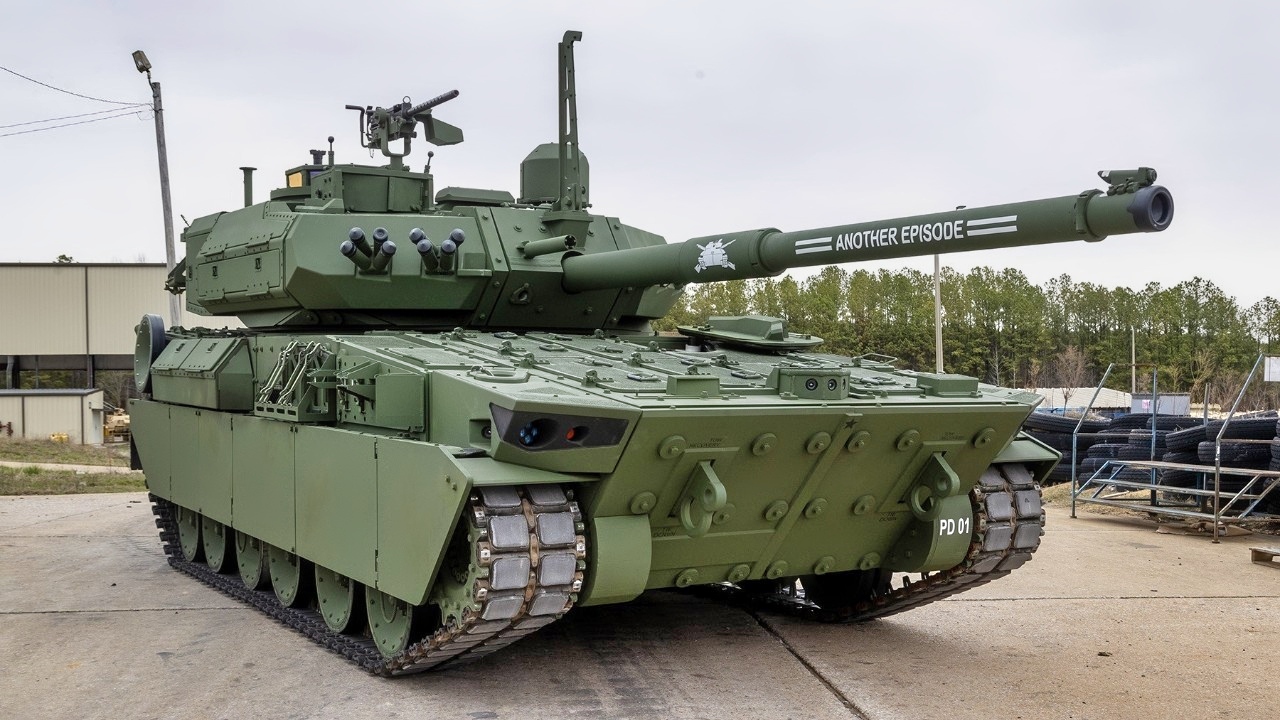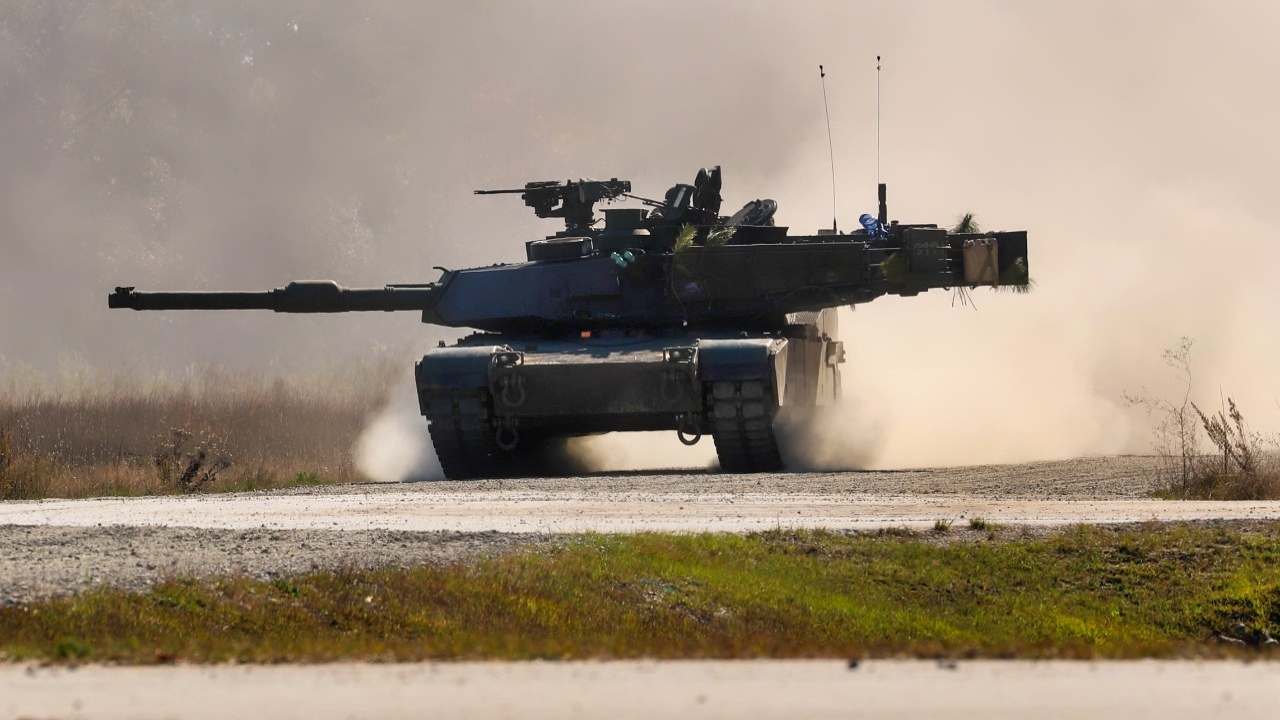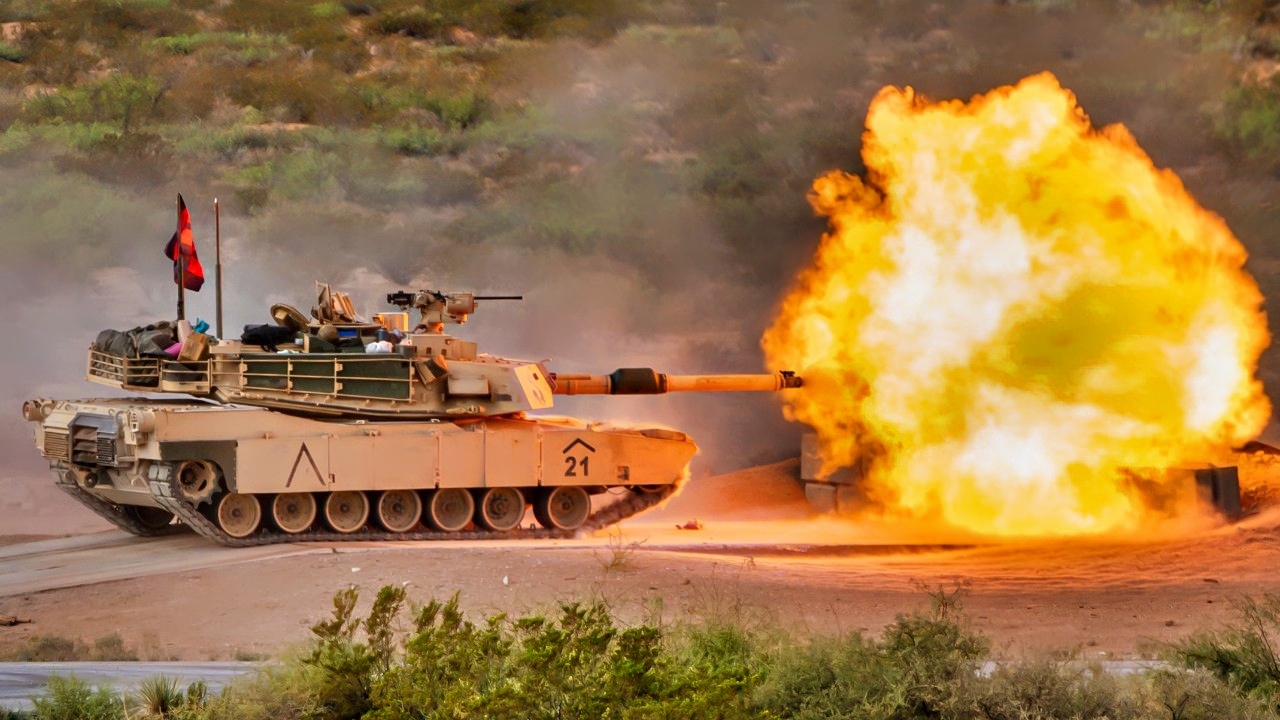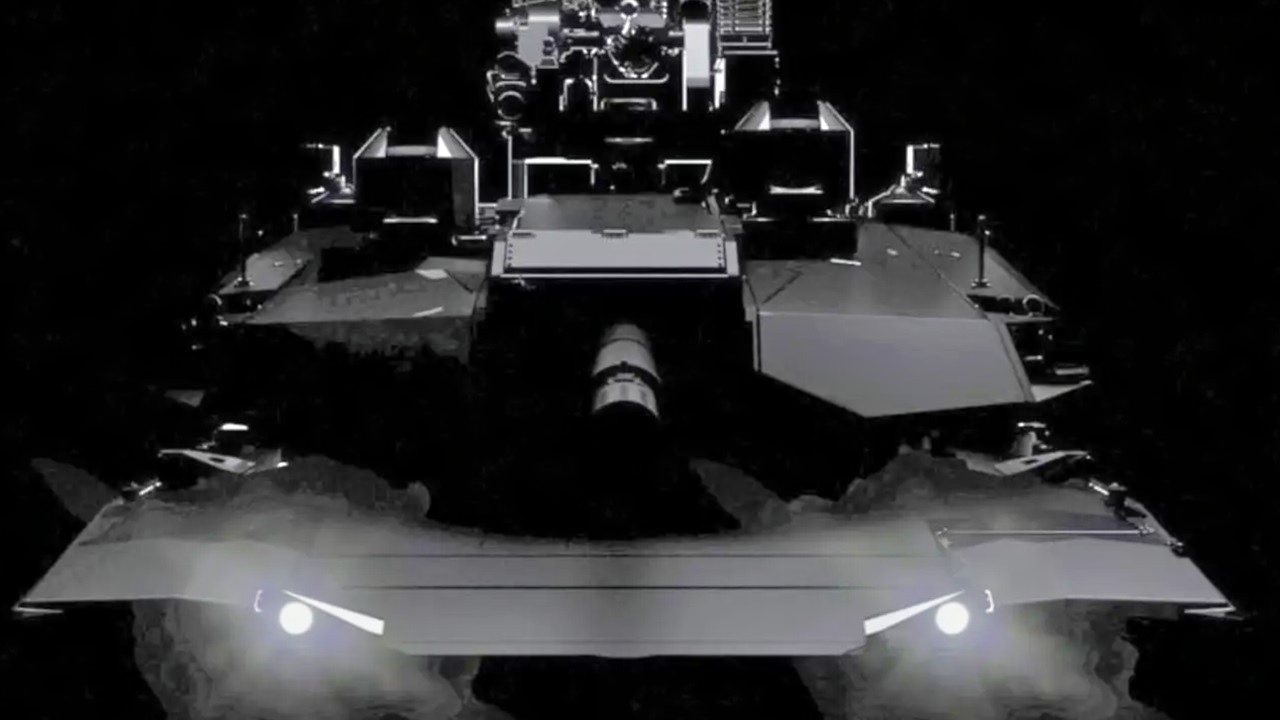Key Points and Summary – The U.S. Army is dramatically accelerating the development of its next-generation M1E3 Abrams tank, aiming for testing next year and fielding within 2-3 years, potentially a decade ahead of schedule.
-Learning from the failed M10 Booker program, the M1E3 focuses on open architecture and rapid prototyping with soldier feedback.

A M1A2 SEPV3 Abrams Tank fires at multiple range targets during a range warfighter exercise, April 11, 2021, Fort Hood, Texas. The visit with foreign allies allows the U.S. Army to boost interoperability of staff members and warfighting capabilities with the M1A2 SEPv3 Abrams Tank. (U.S. Army photo by Sgt. Melissa N. Lessard)
-Key upgrades include a lighter 60-ton design, a fuel-efficient hybrid-electric engine (offering 40% better fuel economy), and an advanced Active Protection System for drone and missile defense.
-This fast-tracked approach seeks to deliver a modernized, adaptable Abrams quickly to maintain armored dominance.
New M1E3 Abrams Tank Version Could Be On Active Duty in a Few Years Instead of a Decade
Here’s one to chalk up as good news for the U.S. Army.
The service branch hasn’t fielded a new Abrams tank in three decades.
It is time for an update, and the latest M1E3 prototypes could be tested next year, rather than waiting until the 2030s before they go on active duty.
That’s just fine with the Army, which is looking to quickly transition to next-generation armored warfare that needs to dominate in Europe against Russia or on the Korean Peninsula against North Korea, not to mention in land combat against China.
The M1E3 Was a Head-Scratcher Early On
The M1E3 contract was awarded to General Dynamics in 2024, and the outlook for the new version appeared uncertain.
The M1E3 had many questions about its future, and Army acquisition honchos were not confident, according to a recent article from Defense One.
“That just isn’t going to cut it,” Danny Deep, General Dynamics executive vice president for global operations, told the crowd October 15 at the AUSA annual meeting in Washington, D.C. “The requirements are going to change 100 times between now and then,” Defense One noted.
The M10 Booker Cautionary Tale
That’s what happened to the Army’s light tank called the M10 Booker.
This armored vehicle was supposed to assist light infantry troops against enemy armored forces. Then it needed more protection against anti-tank missiles and drones, and the armor was thickened.

PD1 – Delivery of First Production Vehicle M10 Booker Combat Vehicle. Image Credit: U.S. Army.
After that, it became too heavy to be transported easily to battle zones. The needs kept changing, and the M10 program was canceled, even though it would have been an excellent asset for mechanized warfare brigade combat teams, as well as for potential service in armored cavalry regiments.
Updating on the Fly
Instead of creating features that could be obsolete by the time the M1E3 was ready, the Army opted for updatable software and open architecture. Deep explained how the design needed to be lighter and nimbler without the feature creep that can bedevil a defense program.
The Army wants to begin testing the new tank soon and listen closely to the soldiers who will run it. This is an important step, and the M10 Booker should have been given more feedback from Army personnel before it was fully developed.
The M1E3 is expected to go on active duty within the next two to three years, with test models scheduled to be built in 2026. That’s much better than 2036 – a delay that could cost American armored dominance dearly.

A M1A2 Abrams SEPv3 Main Battle Tank navigates a range during a Combined Arms Live Fire Exercise (CALFEX) at Fort Stewart, Georgia, Nov. 8th 2023. Tank crews honed their skills to ensure proficiency of eliminating targets while coordinating with other tank crews. (U.S. Army photo by Pfc. Luciano Alcala)
The M1E3 will have improved fuel efficiency, be lighter for enhanced speed and maneuverability, and offer greater survivability against drones and anti-tank missiles.
This Program Is Running Lightning Fast
There could even be a “pre-prototype” delivered by December. That is lightning quick for any defense acquisition program and would be a breath of fresh air.
“The way that we move that faster, was we focused on commercialization,” according to Dr. Alex Miller, Chief Technology Officer and Senior Advisor for Science and Technology to the Chief of Staff of the Army. “So rather than building a bespoke power plant and a bespoke transmission, and a bespoke integration cell, we said, hey, there are other companies that do this,” as noted by the War Zone.
Miller shared that Caterpillar will provide the engine, and SAPA will provide the transmission.
“It’ll be hybrid. It will not be fully electric,” Miller said. “We don’t want fully electric, because there’s no place to charge. You need the liquid fuel to actually generate power. But what we’re seeing, and I have not put this to the test, so this is just sort of the math behind it, is the way that they’re going to deliver it, it’ll be about 40 percent more fuel efficient.”
Changing the Battlefield Logistical Chain
That’s a big change from the current fuel-sucking Abrams models. Less fuel means lessened transportation needs and convoys. During the war in Iraq from 2003 to about 2006, the insurgents ambushed many American fuel convoys that were resupplying tanks. These attacks were especially deadly. If there could be a 40 percent fuel savings, we are talking about a significant shift in logistics needs for tanks.
This kind of fuel efficiency is also great on the battlefield. The new Abrams could stay out longer without needing a fuel-up. That is better in combat and can sustain the fight until it reaches a decisive and optimal end state.
The new M1E3 will weigh 60 tons. That’s better than the current weight of the M1A2 System Enhanced Package Version 3 (SEPv3) variant. The SEPv3 weighs around 78 tons with a full combat load.

A U.S. Army M1A2 SEPv2 Abrams assigned to Alpha Company, 1st Battalion, 67th Armor Regiment, 3rd Brigade Combat Team, 1st Armored Division fires at a target before quickly disengaging into a defilade to load a new round at McGregor Range, New Mexico, Sept. 29, 2023. Alpha Co. executed Gunnery Table VI, which evaluates crews on engaging stationary and moving targets while utilizing all weapons systems in offensive and defensive positions, ensuring our crews are trained and ready for any mission. (U.S. Army photo by Spc. David Poleski)
Will that lighter weight be able to protect against drones and anti-tank missiles? The M1E3 will have an active protection system (APS). This is similar to the Trophy APS on some Abrams tanks.
“Trophy is a so-called hard-kill APS that uses a burst of kinetic projectiles to defeat or at least disrupt incoming anti-tank guided missiles (ATGM), as well as other types of infantry anti-armor weapons, such as shoulder-fired rockets and rocket-propelled grenades. A version of the system now exists that also offers protection against drones,” according to the War Zone.
That will have to be tested thoroughly before we can conclude that the new Abrams will be survivable.
Still, at least the Army is learning lessons from the battlefields in Ukraine and Russia, where the “cope cages” to fend off drones in older Abrams tanks donated to Ukraine have not performed that well.
The M1E3 is an exciting beast and should allow the armor branch to be ready for battle into the 2030s. It’s good that the program is moving so fast, but testing will be the most essential part of the program.
It also requires input from soldiers and evaluation of the new version’s survivability. We’ll follow up to see if that pre-prototype will be ready by this winter. That will provide clues as to how quickly the acquisition efforts are progressing.
About the Author: Brent M. Eastwood
Brent M. Eastwood, PhD is the author of Don’t Turn Your Back On the World: a Conservative Foreign Policy and Humans, Machines, and Data: Future Trends in Warfare plus two other books. Brent was the founder and CEO of a tech firm that predicted world events using artificial intelligence. He served as a legislative fellow for US Senator Tim Scott and advised the senator on defense and foreign policy issues. He has taught at American University, George Washington University, and George Mason University. Brent is a former US Army Infantry officer. He can be followed on X @BMEastwood.
More Military
Montana-Class: The U.S. Navy’s Superbattleships That Never Sailed
The F-35 Stealth Fighter Feels Like a Black Hole of Trouble
Russia’s Admiral Nakhimov Kirov-Class Battlecruiser Has a Warning for the Russian Navy
China’s Yuan-Class AIP Stealth Submarine Has A Warning for the U.S. Navy
Mach 6 SR-72 Darkstar Could Soon Be the ‘Fastest Plane on Earth’










